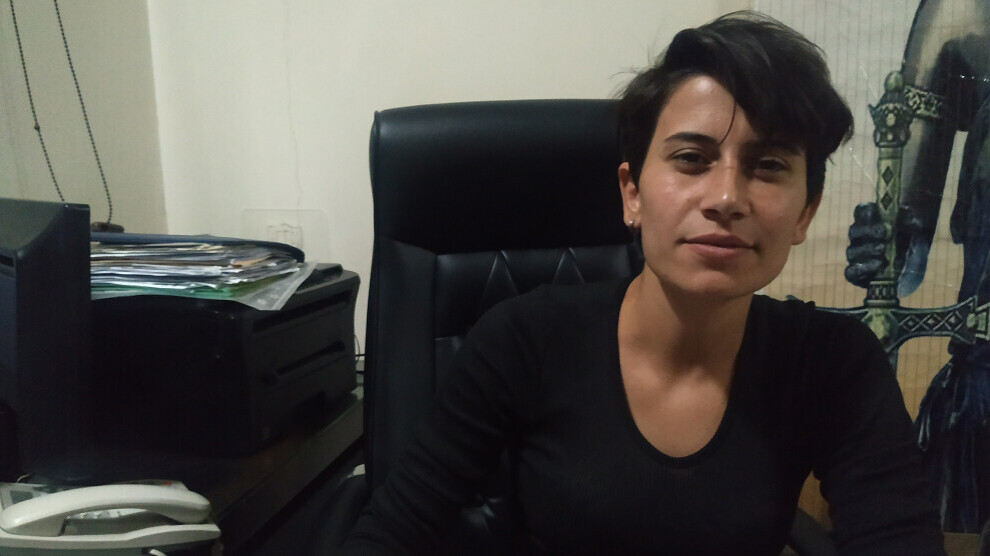The Smell of Coffee Mixed with the Smell of Blood: I Will Never Forget the Scenes of the Massacre
The Jabal Druze Guesthouse in Sweida, once a symbol of hospitality, has now become the site of a bloody massacre. Witnessing the atrocities committed by HTS jihadists, Rima Zein said, “I will never forget those scenes.”

ROCHELLE JUNIOR
Sweida – The Jabal Druze Guesthouse in the Syrian city of Sweida is a sacred symbol of traditional hospitality, known for its unique symbolism. Yet perhaps it was precisely this symbolism that led Hay’at Tahrir al-Sham (HTS) jihadists to target it last July. Following the bloody invasion of the city, as with the Al-Badir Guesthouse, this building was transformed into a horrific scene: savage massacres were carried out against those inside.
The Smell of Blood and Death
A place once filled with the fragrant aroma of coffee mixed with cardamom now carries the stench of blood and death. The guesthouse, once a symbol of hospitality, has become a witness to massacre and human tragedy. This sacred space, where guests were once honored, was turned into a dark stage where innocents were slaughtered, humanity trampled underfoot, and unforgivable violations committed.
‘That scene was not security but filled with fear and humiliation’
Survivor and eyewitness Rama Zein recounted: “I will never forget what we lived through that day. Four policemen in black uniforms bearing the logo of the Interim Government’s Ministry of Interior raided the building where we were staying. They entered without any warning. They forced the young men of our family to kneel and pointed their weapons directly at them. At that moment, we didn’t know what to do. We froze. Two of those policemen began filming us under threat. They tried to give the impression that they were ‘providing security and safety.’ But we were there—we saw the truth. That scene was not about security, it was filled with fear and humiliation. It was a staged show to silence us, intimidate us, and frighten us.”
She went on to explain that the day after the raid she experienced, she witnessed another attack: more than 30 mercenaries in camouflage uniforms, bearing religious symbols and red bandanas, stormed a house where 14 women (mostly non-Syrians) and four young men were staying. Rama Zein said:
“The soldiers beat the young men and verbally harassed them. They stole the women’s phones, jewelry, and money; they also searched the house and confiscated all devices. They forced me to go downstairs. I didn’t know what was going to happen—I just had a growing bad feeling inside. While going down the stairs, right before my eyes, one of the young men inside was shot. A gunshot rang out, and the young man collapsed to the ground. His blood splattered up to my feet.”
‘There were dead bodies along the road’
Rama Zein said that on the stairs, the policemen were trying to film another video:
“In that video, they had grabbed a young man and were shouting at him to ‘bark, howl, and scream.’ That moment showed the depth of the humiliation we were experiencing. As we walked, our neighbors’ house was engulfed in flames. There was a young man named Omar—he was shot before the house completely exploded. Before being taken into custody at HTS headquarters in Sweida, the streets were filled with about seven bodies. There were dead bodies all along the road. I will never forget that sight.”
She also described the detention process:
“When we were detained, we were taken to a wedding hall divided into three sections; the men’s section was almost completely dark, while all the lights were directed toward the women. We endured constant obscene stares and harassment. For four hours, we were interrogated repeatedly, subjected to extremist religious sermons, accused with insults, and calls were made for the extermination of other sects. Around 10 p.m., they said their mission was complete and that the 44th Division would take over; but half an hour later, an order came for a full withdrawal from Sweida. The detainees and I remained there until the morning of July 17. We were then dispersed at the Gallows Junction and the vegetable market. There were around 70 bodies. I will never forget those scenes.”
‘What we saw was more tragic than any human mind could bear’
Rama Zein noted that the bodies of those massacred lay in front of the guesthouse: “Among the corpses, there were two people who were still alive. They had hidden there to protect themselves. They were pretending to be dead. The bodies of civilians who had lost their lives were horrifically deformed even after death. What we witnessed was more tragic than any human mind could endure. The brutal attacks against the Druze left indelible wounds. The destruction was not only physical but also psychological. It had become a scene unworthy of human dignity.”
